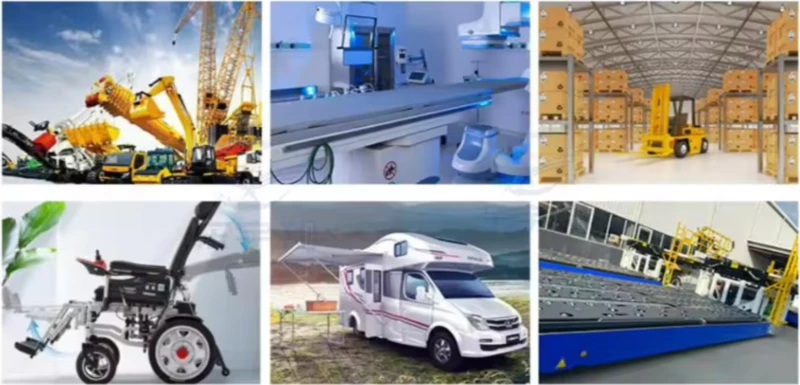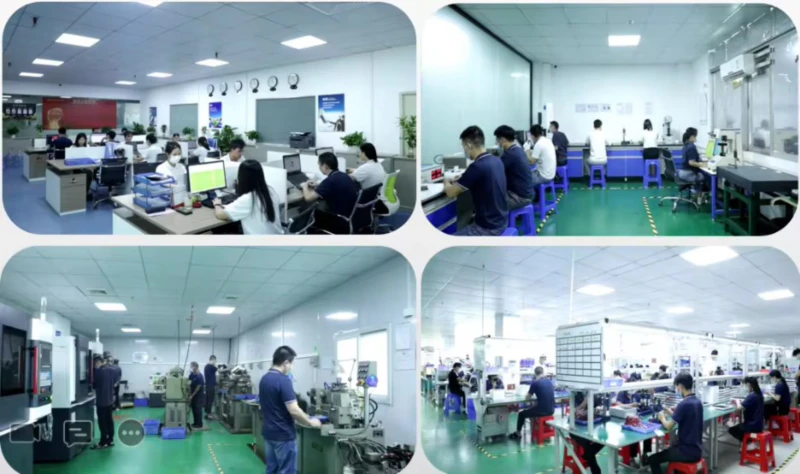Application of Three-Phase Motors in Improving Chemical Production Efficiency
Introduction to Three-Phase Motors
Three-phase motors are indispensable in various industrial applications due to their efficient power utilization and robustness. Their adoption in chemical production processes has shown a significant increase in operational efficiency and reliability. The design of three-phase motors allows for smoother operation, less maintenance, and greater scalability to meet the demanding needs of chemical production.

Energy Efficiency and Cost-Effectiveness
One of the primary advantages of three-phase motors is their energy efficiency. These motors utilize energy more effectively, resulting in lower operational costs. In chemical production, where continuous operation is often required, the reduction in energy consumption translates directly to cost savings. This makes three-phase motors an economically viable choice for large-scale chemical plants.
Enhanced Reliability and Longevity
The robust construction of three-phase motors contributes to their reliability and extended lifespan. Chemical production environments can be harsh, with exposure to corrosive substances and extreme temperatures. Three-phase motors are designed to withstand these conditions, reducing the frequency of breakdowns and maintenance, thus ensuring uninterrupted production schedules.
High Torque and Power Density
Chemical production processes often require motors to deliver high torque at varying speeds. Three-phase motors excel in this regard, providing high torque and power density, which is essential for driving heavy machinery and processing equipment. This capability enhances the overall productivity and efficiency of chemical manufacturing operations.
Scalability and Flexibility in Operations
Chemical production facilities are constantly evolving to meet market demands. Three-phase motors offer scalability and flexibility, allowing for easy integration into existing systems. Their capacity to handle varying loads and speeds makes them suitable for a wide range of chemical processes, from mixing and pumping to heating and cooling.
Reduced Electrical Noise and Vibration
Three-phase motors generate less electrical noise and vibration compared to single-phase motors. This feature is particularly beneficial in chemical production, where precision and stability are crucial. Reduced vibration minimizes wear and tear on machinery, leading to longer equipment life and consistent product quality.
Compatibility with Modern Automation Systems
Modern chemical production increasingly relies on automation and control systems. Three-phase motors are compatible with advanced automation technologies, enabling precise control over production processes. This compatibility ensures optimal performance, efficiency, and safety in automated chemical plants.
Environmental Impact
The environmental impact of industrial operations is a growing concern. Three-phase motors contribute to greener production practices by consuming less energy and producing fewer emissions. Their energy-efficient design helps chemical plants reduce their carbon footprint, aligning with global sustainability goals.
Technical Specifications and Performance Metrics
Understanding the technical specifications and performance metrics of three-phase motors is essential for their effective application in chemical production. These motors are rated by their power output, efficiency, torque, and operational temperature range. Selecting the right motor based on these parameters ensures optimal performance and longevity.
Maintenance and Troubleshooting
While three-phase motors are known for their durability, regular maintenance is crucial to prevent unexpected downtimes. Routine inspections and timely troubleshooting can address potential issues before they escalate. Preventive maintenance practices include checking electrical connections, lubrication, and monitoring vibration levels.
Integration with Existing Systems
Integrating three-phase motors into existing chemical production systems requires careful planning and execution. Factors such as compatibility with current machinery, electrical infrastructure, and control systems need to be considered. Proper integration ensures seamless operation and maximizes the benefits of using three-phase motors.
Case Studies: Successful Implementations
Numerous chemical plants have successfully implemented three-phase motors in their operations. Case studies highlight the tangible benefits achieved, including increased production efficiency, reduced energy costs, and improved reliability. These real-world examples provide valuable insights and best practices for other facilities considering similar upgrades.
Future Trends and Innovations
The development of three-phase motors continues to evolve with advancements in materials, design, and control technologies. Future trends indicate more compact and efficient motors, integrated with smart sensors for predictive maintenance. These innovations will further enhance the role of three-phase motors in chemical production.
Regulatory Compliance and Safety Standards
Adherence to regulatory compliance and safety standards is paramount in chemical production. Three-phase motors must meet stringent safety requirements to ensure safe operation in hazardous environments. Compliance with international standards, such as IEC and NEMA, guarantees that the motors can be used safely and effectively.
Training and Skill Development
Proper training and skill development for personnel handling three-phase motors are essential. Training programs should cover installation, maintenance, and troubleshooting techniques. Skilled operators can maximize the efficiency and lifespan of the motors, contributing to the overall success of the chemical production facility.
Cost-Benefit Analysis
Conducting a cost-benefit analysis helps in evaluating the financial feasibility of incorporating three-phase motors in chemical production. The analysis should consider initial investment costs, operational savings, maintenance expenses, and potential productivity gains. A thorough cost-benefit analysis aids in making informed investment decisions.
Supplier Selection and Quality Assurance
Selecting a reliable supplier is crucial for acquiring high-quality three-phase motors. Quality assurance processes should include supplier evaluations, product testing, and adherence to manufacturing standards. Partnering with reputable suppliers ensures that the motors meet performance expectations and have a long operational life.
Customization for Specific Applications
Chemical production processes often have unique requirements. Customizing three-phase motors to meet specific application needs can optimize performance. Customization options include motor sizing, cooling methods, and enclosure types. Tailored solutions provide better alignment with process demands and efficiency goals.
Economic Impact on the Chemical Industry
The adoption of three-phase motors has a significant economic impact on the chemical industry. By lowering energy costs and improving production efficiency, these motors contribute to the profitability and competitiveness of chemical companies. The economic benefits extend to the industry as a whole, fostering growth and innovation.
Global Market Trends
The global market for three-phase motors is expanding, driven by the demand for energy-efficient and reliable industrial equipment. Market trends indicate increasing adoption in developing regions, where industrialization and infrastructure development are accelerating. Understanding these trends helps chemical producers anticipate market dynamics and plan accordingly.
Environmental and Sustainability Goals
Chemical production companies are increasingly focusing on sustainability goals. Three-phase motors play a vital role in achieving these goals by enhancing energy efficiency and reducing environmental impact. Their use supports corporate sustainability initiatives and aligns with global efforts to combat climate change.
Technological Advancements in Motor Design
Technological advancements are continually improving the design and performance of three-phase motors. Innovations in materials, cooling systems, and control algorithms are enhancing motor efficiency and reliability. Staying abreast of these advancements enables chemical producers to leverage the latest technologies for optimal results.
Operational Challenges and Solutions
Implementing three-phase motors in chemical production can present operational challenges. These challenges include integration with existing systems, ensuring compatibility with process requirements, and maintaining optimal performance. Identifying and addressing these challenges through strategic planning and technical solutions is crucial for successful implementation.
Impact on Product Quality and Consistency
The use of three-phase motors directly impacts the quality and consistency of chemical products. Stable and precise motor operation ensures consistent process parameters, leading to uniform product quality. This consistency is essential for meeting industry standards and customer expectations.
Conclusion and Future Outlook
The application of three-phase motors in chemical production has proven to be a game-changer, driving significant improvements in efficiency, reliability, and cost-effectiveness. As the industry evolves, the role of these motors will continue to grow, supported by ongoing advancements in technology and materials. By embracing these innovations, chemical producers can achieve higher productivity, better sustainability, and enhanced competitiveness in the global market.

Company and Product Promotion
Our company, a leading player in the Chinese motor market, offers a wide range of high-quality motors including 3-phase motors, DC motors, encoder DC motors, hydraulic motors, servo motors, driveline motors, and brake motors. With over 300 sets of fully automated CNC production equipment and automated assembly lines, we ensure superior product quality, competitive pricing, and excellent service. Customers are welcome to provide drawings or samples for custom orders.

Author: Czh.